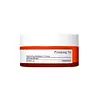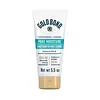What's inside
What's inside
 Key Ingredients
Key Ingredients

 Benefits
Benefits

 Concerns
Concerns

 Ingredients Side-by-side
Ingredients Side-by-side

Water
Skin ConditioningDipropylene Glycol
HumectantCaprylic/Capric Triglyceride
MaskingGlycerin
HumectantHydrogenated Poly(C6-14 Olefin)
Emollient1,2-Hexanediol
Skin ConditioningNiacinamide
SmoothingGlyceryl Stearate Se
EmulsifyingVinyldimethicone
Polyglyceryl-3 Distearate
EmulsifyingStearic Acid
CleansingCetearyl Alcohol
EmollientAmmonium Acryloyldimethyltaurate/Vp Copolymer
Carbomer
Emulsion StabilisingTromethamine
BufferingCetyl Ethylhexanoate
EmollientGlyceryl Stearate Citrate
EmollientEthylhexyl Palmitate
EmollientCetearyl Glucoside
EmulsifyingHydrogenated Lecithin
EmulsifyingTocopherol
AntioxidantSodium Methyl Stearoyl Taurate
CleansingAdenosine
Skin ConditioningEthylhexylglycerin
Skin ConditioningDisodium EDTA
Panthenol
Skin ConditioningPearl Extract
AntioxidantButylene Glycol
HumectantArachidic Acid
CleansingPalmitic Acid
EmollientMacadamia Ternifolia Seed Oil
EmollientGlucose
HumectantOleic Acid
EmollientBrassica Campestris Sterols
EmollientCholesterol
EmollientPhytosteryl/Behenyl/Octyldodecyl Lauroyl Glutamate
Skin ConditioningSodium Hyaluronate
HumectantPolyglyceryl-10 Oleate
Skin ConditioningCaprylyl Glycol
EmollientCeramide NP
Skin ConditioningPotassium Cetyl Phosphate
EmulsifyingChrysanthemum Morifolium Flower Extract
Skin ConditioningBroussonetia Kazinoki Root Extract
Skin ConditioningHyaluronic Acid
HumectantAscorbic Acid
AntioxidantCeramide Ns
Skin ConditioningCeramide EOP
Skin ConditioningWater, Dipropylene Glycol, Caprylic/Capric Triglyceride, Glycerin, Hydrogenated Poly(C6-14 Olefin), 1,2-Hexanediol, Niacinamide, Glyceryl Stearate Se, Vinyldimethicone, Polyglyceryl-3 Distearate, Stearic Acid, Cetearyl Alcohol, Ammonium Acryloyldimethyltaurate/Vp Copolymer, Carbomer, Tromethamine, Cetyl Ethylhexanoate, Glyceryl Stearate Citrate, Ethylhexyl Palmitate, Cetearyl Glucoside, Hydrogenated Lecithin, Tocopherol, Sodium Methyl Stearoyl Taurate, Adenosine, Ethylhexylglycerin, Disodium EDTA, Panthenol, Pearl Extract, Butylene Glycol, Arachidic Acid, Palmitic Acid, Macadamia Ternifolia Seed Oil, Glucose, Oleic Acid, Brassica Campestris Sterols, Cholesterol, Phytosteryl/Behenyl/Octyldodecyl Lauroyl Glutamate, Sodium Hyaluronate, Polyglyceryl-10 Oleate, Caprylyl Glycol, Ceramide NP, Potassium Cetyl Phosphate, Chrysanthemum Morifolium Flower Extract, Broussonetia Kazinoki Root Extract, Hyaluronic Acid, Ascorbic Acid, Ceramide Ns, Ceramide EOP
Water
Skin ConditioningHydroxyethyl Urea
HumectantCaprylic/Capric Triglyceride
MaskingDimethicone
EmollientGlycerin
HumectantStearyl Alcohol
EmollientVitis Vinifera Seed Oil
EmollientGlyceryl Stearate
EmollientSodium Hyaluronate
HumectantCeramide NP
Skin ConditioningGluconolactone
Skin ConditioningSteareth-21
CleansingNiacinamide
SmoothingGuar Hydroxypropyltrimonium Chloride
Skin ConditioningCholesterol
EmollientCeramide Ns
Skin ConditioningPolysorbate 60
EmulsifyingEthylhexylglycerin
Skin ConditioningPanthenol
Skin ConditioningCeramide EOP
Skin ConditioningCaprooyl Phytosphingosine
Skin ConditioningPolyacrylate Crosspolymer-6
Emulsion StabilisingCeramide Eos
Skin ConditioningHydroxyacetophenone
AntioxidantCetyl Alcohol
EmollientCeramide AP
Skin ConditioningCaprooyl Sphingosine
Skin ConditioningTocopherol
AntioxidantCetearyl Alcohol
EmollientDisodium EDTA
Ceteareth-25
Cleansing3-O-Ethyl Ascorbic Acid
Skin ConditioningBehenic Acid
CleansingWater, Hydroxyethyl Urea, Caprylic/Capric Triglyceride, Dimethicone, Glycerin, Stearyl Alcohol, Vitis Vinifera Seed Oil, Glyceryl Stearate, Sodium Hyaluronate, Ceramide NP, Gluconolactone, Steareth-21, Niacinamide, Guar Hydroxypropyltrimonium Chloride, Cholesterol, Ceramide Ns, Polysorbate 60, Ethylhexylglycerin, Panthenol, Ceramide EOP, Caprooyl Phytosphingosine, Polyacrylate Crosspolymer-6, Ceramide Eos, Hydroxyacetophenone, Cetyl Alcohol, Ceramide AP, Caprooyl Sphingosine, Tocopherol, Cetearyl Alcohol, Disodium EDTA, Ceteareth-25, 3-O-Ethyl Ascorbic Acid, Behenic Acid
 Reviews
Reviews

Ingredients Explained
These ingredients are found in both products.
Ingredients higher up in an ingredient list are typically present in a larger amount.
This ingredient is an emollient, solvent, and texture enhancer. It is considered a skin-softener by helping the skin prevent moisture loss.
It helps thicken a product's formula and makes it easier to spread by dissolving clumping compounds.
Caprylic Triglyceride is made by combining glycerin with coconut oil, forming a clear liquid.
While there is an assumption Caprylic Triglyceride can clog pores due to it being derived from coconut oil, there is no research supporting this.
Learn more about Caprylic/Capric TriglycerideCeramide EOP is formally known as Ceramide 1 and Ceramide 1 A.
EOP stands for a linked Ester fatty acid, a linked Omega hydroxy fatty acid, and the Phytosphingosine base.
Ceramides are intercellular lipids naturally found in our skin. They bind dead skin cells together to create a barrier. The ceramides in our skin have the ability to hold water to keep our skin hydrated.
Ceramides are an important building block for our skin barrier. A strong skin barrier helps with:
If you would like to eat ceramides, sweet potatoes contain a small amount.
Read more about other common types of ceramides here:
Learn more about Ceramide EOPCeramide NP is a type of ceramide and formally known as ceramide 3.
Ceramides are intercellular lipids naturally found in our skin that bonds dead skin cells together to create a barrier. They are known for their ability to hold water and thus are a great ingredient for dry skin.
Ceramides are an important building block for our skin barrier. A stronger barrier helps the skin look more firm and hydrated. By bolstering the skin ceramides act as a barrier against irritating ingredients. This can help with inflammation as well.
If you would like to eat ceramides, sweet potatoes contain a small amount.
Read more about other common types of ceramides here:
Ceramide AP
Ceramide EOP
Ceramide NS is formally known as Ceramide 2. It is one of the major ceramides in the stratum corneum (outermost layer of skin) plays a role in forming a protective barrier.
Due to its structure, skin lipids can be packed tightly and in turn, this strengthens the barrier and reduces water loss.
Studies show conditions like atopic dermatitis can worsen when ceramide NS levels are low.
Learn more about Ceramide NsCetearyl alcohol is a mixture of two fatty alcohols: cetyl alcohol and stearyl alcohol. It is mainly used as an emulsifier. Emulsifiers help prevent the separation of oils and products. Due to its composition, it can also be used to thicken a product or help create foam.
Cetearyl alcohol is an emollient. Emollients help soothe and hydrate the skin by trapping moisture.
Studies show Cetearyl alcohol is non-toxic and non-irritating. The FDA allows products labeled "alcohol-free" to have fatty alcohols.
This ingredient is usually derived from plant oils such as palm, vegetable, or coconut oils. There is debate on whether this ingredient will cause acne.
Due to the fatty acid base, this ingredient may not be Malassezia folliculitis safe.
Learn more about Cetearyl AlcoholCholesterol is a class of organic molecules called lipids. It helps hydrate your skin and is essential to having a healthy skin barrier.
Our skin naturally contains cholesterol in the outermost layer. Besides cholesterol, it also contains ceramides and fatty acids. Cholesterol makes up about 1/4 of your skin's outer layer and barrier. Your skin barrier is responsible for keeping allergens and microbes out. Having a healthy skin barrier is also responsible for keeping your skin firm and plump.
Our bodies use cholestrol to create vitamin D, steroid hormones, and more.
Learn more about CholesterolDisodium EDTA plays a role in making products more stable by aiding other preservatives.
It is a chelating agent, meaning it neutralizes metal ions that may be found in a product.
Disodium EDTA is a salt of edetic acid and is found to be safe in cosmetic ingredients.
Learn more about Disodium EDTAEthylhexylglycerin (we can't pronounce this either) is commonly used as a preservative and skin softener. It is derived from glyceryl.
You might see Ethylhexylglycerin often paired with other preservatives such as phenoxyethanol. Ethylhexylglycerin has been found to increase the effectiveness of these other preservatives.
Glycerin is already naturally found in your skin. It helps moisturize and protect your skin.
A study from 2016 found glycerin to be more effective as a humectant than AHAs and hyaluronic acid.
As a humectant, it helps the skin stay hydrated by pulling moisture to your skin. The low molecular weight of glycerin allows it to pull moisture into the deeper layers of your skin.
Hydrated skin improves your skin barrier; Your skin barrier helps protect against irritants and bacteria.
Glycerin has also been found to have antimicrobial and antiviral properties. Due to these properties, glycerin is often used in wound and burn treatments.
In cosmetics, glycerin is usually derived from plants such as soybean or palm. However, it can also be sourced from animals, such as tallow or animal fat.
This ingredient is organic, colorless, odorless, and non-toxic.
Glycerin is the name for this ingredient in American English. British English uses Glycerol/Glycerine.
Learn more about GlycerinNiacinamide is a multitasking form of vitamin B3 that strengthens the skin barrier, reduces pores and dark spots, regulates oil, and improves signs of aging.
And the best part? It's gentle and well-tolerated by most skin types, including sensitive and reactive skin.
You might have heard of "niacin flush", or the reddening of skin that causes itchiness. Niacinamide has not been found to cause this.
In very rare cases, some individuals may not be able to tolerate niacinamide at all or experience an allergic reaction to it.
If you are experiencing flaking, irritation, and dryness with this ingredient, be sure to double check all your products as this ingredient can be found in all categories of skincare.
When incorporating niacinamide into your routine, look out for concentration amounts. Typically, 5% niacinamide provides benefits such as fading dark spots. However, if you have sensitive skin, it is better to begin with a smaller concentration.
When you apply niacinamide to your skin, your body converts it into nicotinamide adenine dinucleotide (NAD). NAD is an essential coenzyme that is already found in your cells as "fuel" and powers countless biological processes.
In your skin, NAD helps repair cell damage, produce new healthy cells, support collagen production, strengthen the skin barrier, and fight environmental stressors (like UV and pollution).
Our natural NAD levels start to decline with age, leading to slower skin repair, visible aging, and a weaker skin barrier. By providing your skin niacinamide, you're recharging your skin's NAD levels. This leads to stronger, healthier, and younger looking skin.
Another name for vitamin B3 is nicotinamide. This vitamin is water-soluble and our bodies don't store it. We obtain Vitamin B3 from either food or skincare. Meat, fish, wheat, yeast, and leafy greens contain vitamin B3.
The type of niacinamide used in skincare is synthetically created.
Learn more about NiacinamidePanthenol is a common ingredient that helps hydrate and soothe the skin. It is found naturally in our skin and hair.
There are two forms of panthenol: D and L.
D-panthenol is also known as dexpanthenol. Most cosmetics use dexpanthenol or a mixture of D and L-panthenol.
Panthenol is famous due to its ability to go deeper into the skin's layers. Using this ingredient has numerous pros (and no cons):
Like hyaluronic acid, panthenol is a humectant. Humectants are able to bind and hold large amounts of water to keep skin hydrated.
This ingredient works well for wound healing. It works by increasing tissue in the wound and helps close open wounds.
Once oxidized, panthenol converts to pantothenic acid. Panthothenic acid is found in all living cells.
This ingredient is also referred to as pro-vitamin B5.
Learn more about PanthenolSodium Hyaluronate is hyaluronic acid's salt form. It is commonly derived from the sodium salt of hyaluronic acid.
Like hyaluronic acid, it is great at holding water and acts as a humectant. This makes it a great skin hydrating ingredient.
Sodium Hyaluronate is naturally occurring in our bodies and is mostly found in eye fluid and joints.
These are some other common types of Hyaluronic Acid:
Learn more about Sodium HyaluronateTocopherol (also known as Vitamin E) is a common antioxidant used to help protect the skin from free-radicals and strengthen the skin barrier. It's also fat soluble - this means our skin is great at absorbing it.
Vitamin E also helps keep your natural skin lipids healthy. Your lipid skin barrier naturally consists of lipids, ceramides, and fatty acids. Vitamin E offers extra protection for your skin’s lipid barrier, keeping your skin healthy and nourished.
Another benefit is a bit of UV protection. Vitamin E helps reduce the damage caused by UVB rays. (It should not replace your sunscreen). Combining it with Vitamin C can decrease sunburned cells and hyperpigmentation after UV exposure.
You might have noticed Vitamin E + C often paired together. This is because it is great at stabilizing Vitamin C. Using the two together helps increase the effectiveness of both ingredients.
There are often claims that Vitamin E can reduce/prevent scarring, but these claims haven't been confirmed by scientific research.
Learn more about TocopherolWater. It's the most common cosmetic ingredient of all. You'll usually see it at the top of ingredient lists, meaning that it makes up the largest part of the product.
So why is it so popular? Water most often acts as a solvent - this means that it helps dissolve other ingredients into the formulation.
You'll also recognize water as that liquid we all need to stay alive. If you see this, drink a glass of water. Stay hydrated!
Learn more about Water